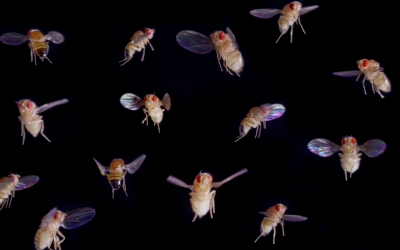
Fruit flies were the first organisms sent to space. For many years before sending mammals into space, such as dogs or humans, scientists studied Drosophila melanogaster (the common fruit fly) and its reactions to both radiation and space flight to understand the possible effects of space and a zero-gravity environment on humans. Starting in the 1910s, researchers conducted experiments on fruit flies because humans and fruit flies share many genes. On February 20, 1947, fruit flies became the first living and sentient organisms to go to space and return, which paved the way for human exploration. At the height of the Cold War and the Space Race, flies were sent on missions to space with great frequency, allowing scientists to study the nature of living and breeding in space. Scientists and researchers from the Soviet Union and the United States both used fruit flies for their research and missions.
Fruit flies have been used in recent years as the reality of Mars and Moon colonization becomes clearer. These flies further the understanding of the effects of weightlessness on the cardiovascular system, the immune system, and the genes of astronauts. Fruit flies have been invaluable assets to scientific discoveries that humankind have made, especially discoveries about space travel.
Mankind has long admired the heavens and wondered about space. Even after the Space Race was completed, advancements in space travel continued. Researchers continue to study the ability of life to survive in the harsh atmosphere of space, promote commercial development, expand and advance knowledge, and prepare future generations for exploration. Throughout time, Animals in space have ensured suitable conditions for human exploration. Larger animals including dogs, monkeys, cats, mice, and others, have been vital to many excursions, as have insects.
The fruit fly has frequently been utilized for space travel, due to its comparable genetics to that of humans. The short gestation period and quick maturing process allows their continued use. Additionally, a female fruit fly can lay one hundred eggs daily, and each egg requires less than ten days to fully mature. Since three-quarters of its genome compares to other organisms, fruit flies frequently proceed humans in space travel because their entire genetic makeup, including the sex chromosomes, have been sequenced by scientists.
Credit : Wikipedia
Picture Credit : Google




